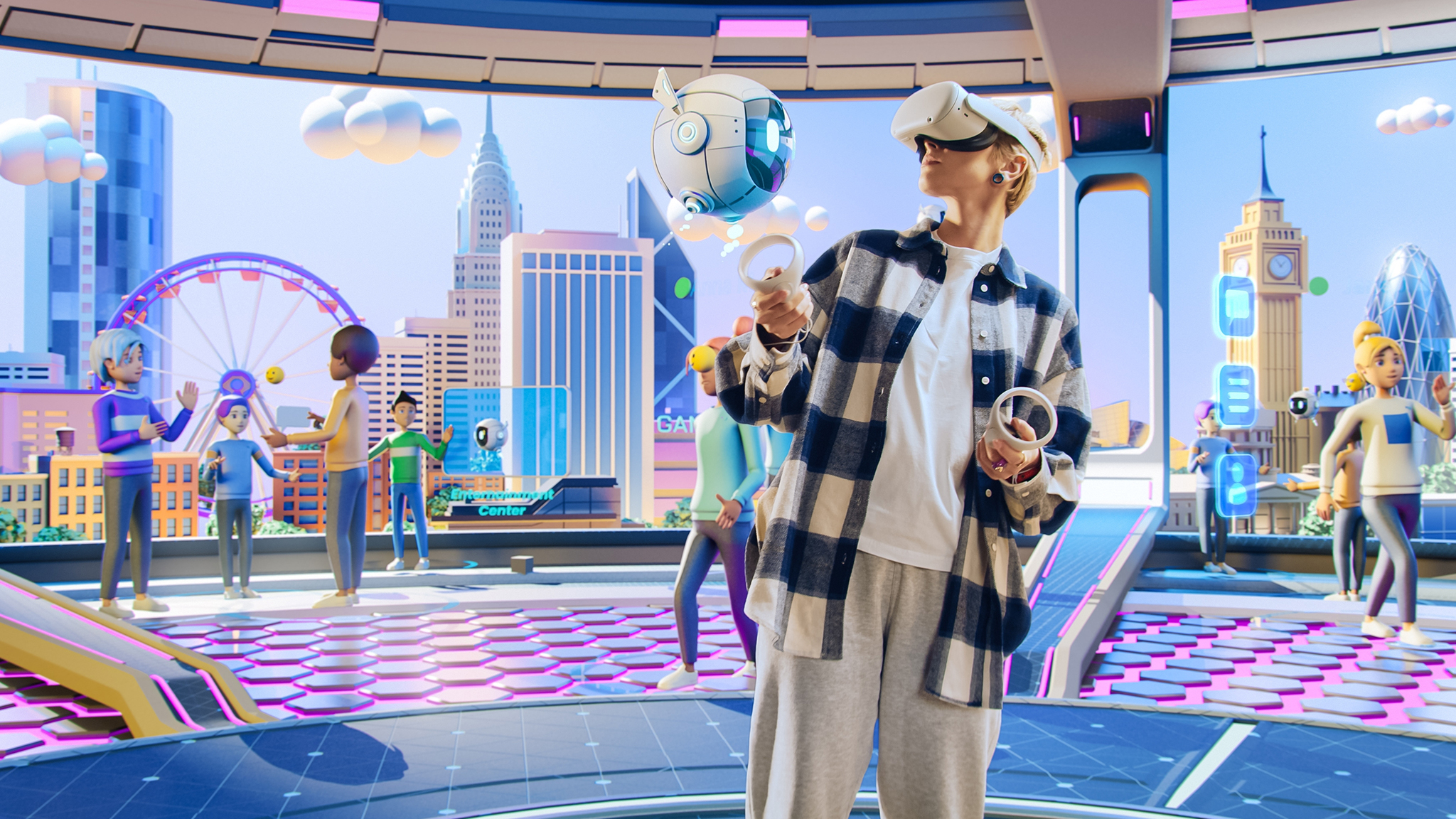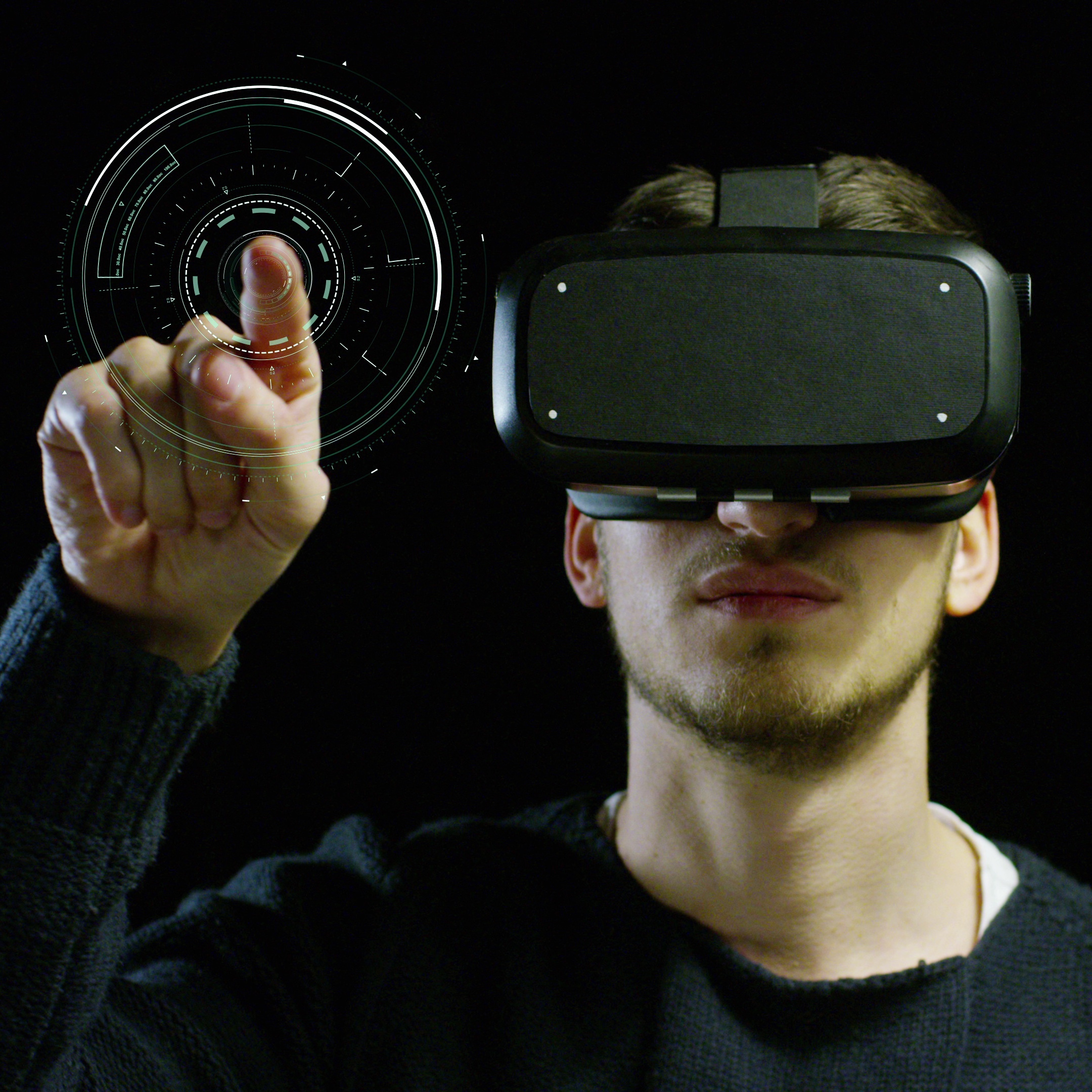The Next Level: AR in location-based virtual events
Augmented Reality (AR) is ushering in a new era of immersive experiences in location-based virtual events. No longer limited to gaming or simulations, AR has expanded its reach into live performances and events. Picture being at a concert where AR visual effects bring the stage to life or a theatrical show where actors engage with virtual elements flawlessly integrated into the natural environment. This isn’t a vision of a far-off future; it’s already a reality.
The rise of AR virtual concerts signifies more than technological innovation; it marks a new chapter in storytelling and audience involvement. For example, geolocation-based AR enhancements have transformed how we experience virtual concerts. You’re not just an onlooker anymore; you’re an essential component of the show, interacting with both the performers and the augmented world surrounding you. This fusion of fundamental and digital elements elevates the live event experience, making it more captivating, unforgettable, and, above all, personal.
This blog seeks to explore the game-changing influence of AR in location-based virtual events. From its early applications to its future potential, we’ll examine how AR alters our perception of live performances, turning them from mere events to attend to immersive worlds to explore.
The Transformation of Concerts in the Age of AR
Concerts have seen a significant evolution, transitioning from physical spaces buzzing with the energy of live audiences to virtual platforms offering alternative yet equally engaging forms of interaction. Leading this change is none other than Augmented Reality (AR).
AR isn’t merely a tech gimmick; it’s an artistic tool that amplifies the concert experience. Envision not just observing a show but being surrounded by it. AR provides a panoramic view that immerses you in the heart of the performance. Synchronized high-quality audio and visual elements create a multi-sensory extravaganza. You’re not merely an observer but an active player in a vibrant, immersive universe.
This move toward immersive experiences has been punctuated by key events that have redefined concert expectations. For example, the K-pop sensation BTS broke new ground as the inaugural K-pop act to headline an XR concert. Their trailblazing show highlighted the boundless opportunities of incorporating extended reality technologies, including AR virtual events.
Similarly, The Weeknd’s XR spectacle at the Palms Casino Resort in Las Vegas was a game-changer. Within the first day, the event garnered over two million views, confirming that the desire for such immersive experiences is not a fleeting fascination but a growing necessity. Other artists like Billie Eilish, Metallica, and Travis Scott have also entered this domain, each amassing millions of views shortly after their XR performances. These instances serve as compelling examples, illustrating the transformative power of AR in reimagining the concert experience.
What sets these experiences apart? It’s the flawless integration of the physical and digital realms, the tangible and the virtual. AR serves as a connector, linking artists with international audiences in a manner that overcomes geographical barriers. It introduces a novel form of storytelling that is interactive, captivating, and deeply individualized.
The Technical Backbone: Geolocation and AR
While the visual and auditory facets of AR captivate, it’s the geolocation technology that brings contextual depth, transforming the experience from merely immersive to interactively engaging.
So, what’s the role of geolocation in AR?
Simply put, it leverages your device’s GPS to determine your precise location, overlaying digital components onto your real-world surroundings based on this information. This real-time localization enables experiences that are not just visually captivating but also context-sensitive. Picture yourself at an AR virtual concert where the AR features adapt depending on your position in your living room or even as you step outdoors. The show could evolve with you, altering and morphing in real time.
This location-based customization is key to making attendees feel authentically “in the moment” during live events. Watching a performance on a screen is one thing; having that performance envelop you and responsive to your location is a different ballgame. This enhanced sense of presence elevates the experience and makes it unforgettable. You transition from a mere spectator to an engaged participant in a dynamic space.
Additionally, location-based AR introduces fresh opportunities for user engagement. For example, attendees could “navigate” to diverse virtual stages within the same concert, each providing a distinct set of AR experiences. Or envision a virtual scavenger hunt within the concert venue, where hints are concealed in AR and can only be found by physically moving in the real world.
Merging geolocation with AR is more than a technical feat; it’s a creative milestone. It introduces interactivity and customization, shifting the user experience from a generic broadcast to a personalized adventure. As we delve deeper into the boundless potential of AR virtual events, geolocation emerges as a foundational technology, converting each experience into a unique, personal story.
Obstacles and Achievements in Augmented Reality Concerts
Incorporating Augmented Reality (AR) into live events is a journey filled with obstacles and victories. Let’s explore the complexities that define this evolving field.
Spatial Factors
One of the immediate challenges in Augmented Reality concerts lies in the spatial dynamics. Unlike conventional settings, AR spaces are fluid and ever-changing, demanding careful planning to maintain clarity, user engagement, and interaction. The arrangement of virtual components must be exact to avoid blocking the user’s sight or causing distractions. Designers also need to think about intuitively guiding users through these virtual realms, ensuring a smooth experience.
Technological Barriers
Device compatibility remains an issue. The AR landscape is fragmented, featuring a range of devices with varying capabilities. This diversity challenges creators who must adapt experiences for multiple platforms, from mobile phones to specialized AR eyewear. The urgency for cross-platform compatibility has never been higher, as it directly influences user experience and the technology’s reach.
User-Focused Challenges
Understanding how users interact in AR spaces is vital. Interactions in virtual settings can differ based on the device, the user’s AR familiarity, and the physical environment. Crafting experiences accommodating these diverse interactions without overwhelming the user is a nuanced task.
The Gorillaz Concert Powered by Google – Innovation at Play
The Gorillaz concert, fueled by Google’s AR tech, serves as an exemplar in surmounting these challenges. The event showcased innovation, employing geolocation monitoring and real-time AR visualization to craft an unparalleled immersive experience.
Audience Feedback
The concert received widespread praise, with engagement metrics showing high user interaction and satisfaction levels. The flawless incorporation of AR features into the live show captivated attendees, offering a preview into the future of live events.
Tech Behind the Magic
What set this concert apart was the tech infrastructure that enabled it. Geolocation monitoring made users feel “in the moment,” enriching their overall experience. Real-time AR visualization facilitated dynamic interactions, transforming the audience from passive viewers to active participants.
The Future of AR in Location-Based Virtual Events
As we approach a transformative period in live entertainment, the prospective applications of Augmented Reality Concerts are thrilling to contemplate. Let’s explore the avenues to redefine the concert experience in the coming years.
Tech Integration
Emerging technologies like Artificial Intelligence (AI) and machine learning are poised further to amplify the capabilities of AR location-based virtual events. Imagine AI algorithms that can analyze audience behavior in real time, adjusting AR elements to enhance engagement dynamically. Or consider machine learning models that can predict what visuals or interactive features an audience might find most appealing, thereby personalizing the concert experience. The fusion of these technologies will render AR more intelligent and more attuned to user requirements.
Brands and AR
The potential to harness AR for crafting ultra-personalized concert experiences is immense for brands. Think of interactive setlists where the audience can choose the upcoming song or AR virtual backstage passes that provide a unique glimpse behind the curtain. This opens up fresh pathways for sponsorships and collaborations that extend beyond conventional advertising channels.
Conclusion: The New Virtual Event Paradigm
Augmented Reality has done more than introduce interactive elements; it has fundamentally reshaped the AR virtual event landscape. From small-scale performances to large AR virtual concerts, the level of immersion and engagement AR provides is unmatched. It breaks down geographical barriers and fulfills the human desire for communal experiences.
As we look to the future, the scope is filled with potential. Picture AR location-based virtual events where attendees from all corners of the globe can participate in real-time, enjoying a shared experience that is both individualized and universal. With the progression of technology, we can anticipate even more revolutionary developments—like AI-curated setlists, virtual reality social interactions, or even multi-sensory engagements that stimulate both vision and hearing and tactile and olfactory senses.
In summary, the AR virtual concert is an enhancement to the virtual event experience and an anchor for a new paradigm. A paradigm where the boundary between the tangible and the virtual is not merely blurred but is re-envisioned to unlock a new window of boundless opportunities. Standing at this thrilling crossroads, one aspect is evident: the future for AR virtual events is not just hopeful; it’s virtually limitless.



